INDIAN ARMED FORCES CHIEFS ON OUR RELENTLESS AND FOCUSED PUBLISHING EFFORTS

The insightful articles, inspiring narrations and analytical perspectives presented by the Editorial Team, establish an alluring connect with the reader. My compliments and best wishes to SP Guide Publications.

"Over the past 60 years, the growth of SP Guide Publications has mirrored the rising stature of Indian Navy. Its well-researched and informative magazines on Defence and Aerospace sector have served to shape an educated opinion of our military personnel, policy makers and the public alike. I wish SP's Publication team continued success, fair winds and following seas in all future endeavour!"

Since, its inception in 1964, SP Guide Publications has consistently demonstrated commitment to high-quality journalism in the aerospace and defence sectors, earning a well-deserved reputation as Asia's largest media house in this domain. I wish SP Guide Publications continued success in its pursuit of excellence.
- Prime Minister Modi Visits Punjab’s Adampur Air Base, Interacts with Airmen after Successful ‘Operation Sindoor’; Stern Message to Pakistan
- The layered Air Defence systems that worked superbly, the key element of Operation Sindoor
- Operation Sindoor | Day 2 DGMOs Briefing
- Operation Sindoor: India strikes back with Precision and Purpose
- Operation Sindoor: Resolute yet Restrained
- India’s Operation Sindoor Sends a Clear Message to Terror and the World – ‘ZERO TOLERANCE’
- Japan and India set forth a defence cooperation consultancy framework, talks on tank and jet engines
- Terrorist Attack in Pahalgam in Kashmir: Unfolding a long surgical war against PAK
- Lt General Pratik Sharma takes over Command of Indian Army's Northern Command
Sunita Williams, Starliner, and the State of Human Spaceflight
The extended Starliner mission is likely to go down in history for testing technology, teamwork, and tenacity in equal measure.
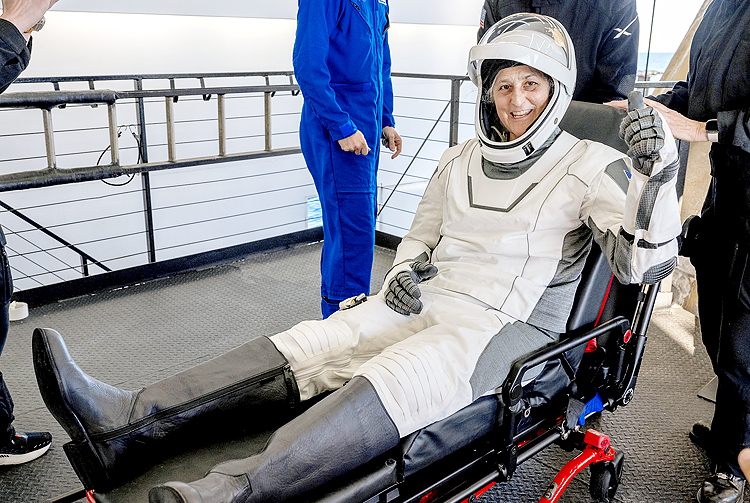
When NASA astronauts Sunita Williams and Barry "Butch" Wilmore lifted off aboard Boeing's Starliner spacecraft on June 5, 2024, the mission was planned to be a straightforward 8-day flight—a crucial validation for Boeing's long-awaited commercial crew capsule. Instead, their planned brief visit extended into a 286-day mission in low Earth orbit, evolving into an extraordinary test not just of engineering, but also of human resilience, adaptability, and the realities of space exploration in the commercial era. What transpired was a reminder that space travel—even after 25 years of continuous International Space Station (ISS) operation and a decade of private sector partnerships—is still not entirely predictable.
The Long Path to Starliner's Flight
The Boeing CST-100 Starliner was developed under NASA's Commercial Crew Programme to provide the agency with a second U.S.-built option for transporting astronauts to and from the ISS—complementing SpaceX's Crew Dragon. While the programme promised flexibility and redundancy, Starliner's route to its first crewed launch was fraught with technical challenges and setbacks.
Its first uncrewed flight in 2019 was marred by software issues that prevented the spacecraft from docking with the ISS. A second, partially successful, uncrewed mission in 2022 improved outcomes but didn't fully redeem the system. Multiple technical problems—including software bugs, corrosion in valves, and propulsion system issues—troubled the spacecraft's development.
When NASA astronauts Sunita Williams and Barry "Butch" Wilmore lifted off aboard Boeing's Starliner spacecraft on June 5, 2024, the mission was planned to be a straightforward 8-day flight—a crucial validation for Boeing's long-awaited commercial crew capsule.
As launch day neared in 2024, new hurdles emerged. A malfunctioning valve in the Atlas V rocket's upper stage, paired with a helium leak in Starliner's own systems, forced delays. In early May 2024, Wilmore even returned to Houston for additional simulator training as engineers worked through the growing list of concerns. After redesigns and scrutiny, the launch finally took place on June 5, 2024, following exhaustive safety reviews.
Making History, Then Facing Historic Uncertainty
The spacecraft lifted off from Cape Canaveral, carrying veteran astronauts Williams and Wilmore. For Williams—already with 322 days logged in orbit—this mission carried historic weight. She became the first woman to pilot the maiden crewed flight of a new orbital spacecraft. Ahead of the launch, she said, "I feel extremely proud to represent not only NASA and the US but also the many young girls and Indian-Americans who look to the stars and dream."
After a 26-hour journey, Starliner docked with the ISS on June 6, 2024. The flight, officially known as the Crew Flight Test (CFT), was intended to demonstrate the Starliner's capabilities and certify it for regular crew transport. Williams and Wilmore were assigned to test life support systems, communication hardware, manual controls, and the spacecraft's automated docking mechanisms. They were expected to return to Earth just over a week later. However, the technical snags were scripting another tale.
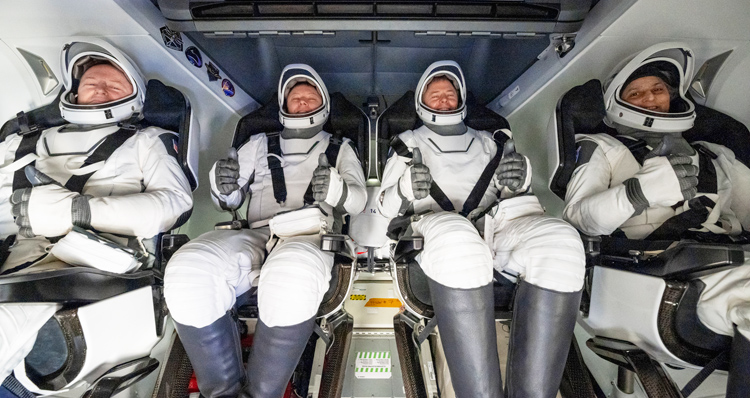
Within days, Starliner exhibited multiple failures: four of its 28 reaction control thrusters malfunctioned, reducing the vehicle's ability to steer itself in orbit or during reentry. Additionally, engineers identified five helium leaks in its propulsion system—a major safety risk, as leaks could disrupt the spacecraft's ability to execute emergency aborts or stable flight.
NASA and Boeing opted to postpone the return trip, deciding that sending the astronauts home in a potentially compromised capsule was too dangerous. A decision was made to leave Starliner docked at the ISS indefinitely, and the spacecraft was later returned empty in September 2024.
"We could have come home if we absolutely had to," Wilmore said in a later briefing. "But it wouldn't have been pretty. NASA made the right call—safety first, always."
Within days, Starliner exhibited multiple failures: four of its 28 reaction control thrusters malfunctioned, reducing the vehicle's ability to steer itself in orbit or during re-entry.
Aboard the ISS
What began as a brief test evolved into an extended stay. Though Williams and Wilmore adapted quickly, transitioning from visitors to active, full-time ISS crew members. "Living in space is never really 'routine', but we adjusted our mindset and got to work," Williams said from orbit. They were integrated into daily ISS operations—conducting scientific experiments, assisting with maintenance, and supporting new arrivals.
One of the experiments they contributed to was the Plant Water Management study, focused on understanding how capillary action can help sustain plant growth in microgravity—vital for future deep-space missions, including Mars. While their extended presence allowed NASA to complete additional research, it also put strain on station resources, as the ISS was not originally provisioned for their prolonged stay.
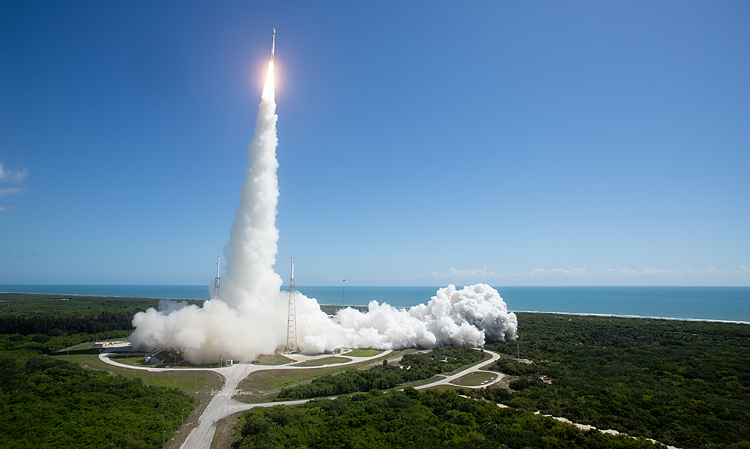
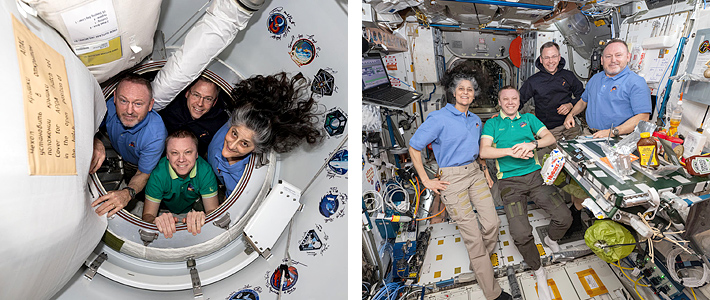
A Display of Resilience
Extended missions in microgravity come with serious health implications: bone density loss, muscle atrophy, fluid redistribution affecting vision, and increased radiation exposure. Though NASA's daily exercise regimens help mitigate these effects, a 9-month stay pushes human biology to the edge.
After landing back, both astronauts undergo a 45-day rehabilitation programme on Earth, managed by NASA's Astronaut Strength, Conditioning and Rehabilitation (ASCR) team. The programme is split into three phases—starting from basic ambulation and muscle rebuilding, progressing to proprioceptive and cardiovascular conditioning, and eventually to full functional development. Each astronaut's routine is customised based on mission role, test data, and health needs.
Ultimately, NASA opted for a practical and safe alternative: bringing the astronauts home aboard SpaceX's Crew Dragon—a vehicle with a solid performance record and proven safety.
The delay and the final touchdown back home
Starliner's complications were far from straightforward — and resolving them wasn't either. Engineers at Boeing and NASA spent months running simulations, conducting tests, and verifying fixes for the helium leaks and thruster issues. With astronauts onboard, such troubleshooting couldn't happen in real time. Adding to the delays was the postponement of the Crew-10 mission, originally planned to relieve Williams and Wilmore on the ISS. This further pushed back their return timeline. Ultimately, NASA opted for a practical and safe alternative: bringing the astronauts home aboard SpaceX's Crew Dragon — a vehicle with a solid performance record and proven safety. "This wasn't about company preference — it was about mission assurance," said former NASA Administrator Bill Nelson. "Our priority is always the safe return of our astronauts."
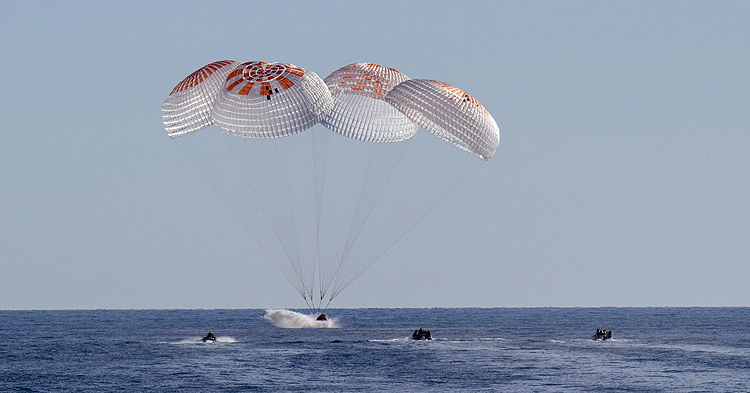
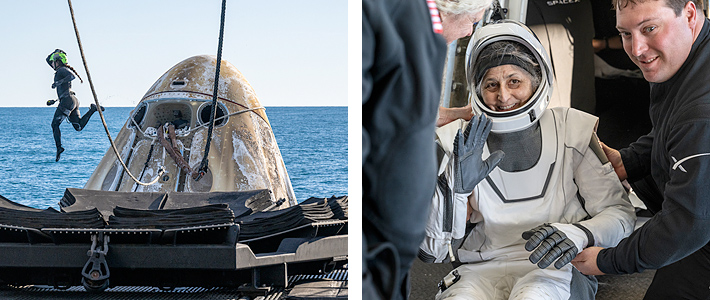
After an extended wait and intense public interest, Sunita Williams and Butch Wilmore finally returned to Earth on March 18, 2025 aboard SpaceX's Crew Dragon. They splashed down in the Atlantic Ocean aboard the Crew Dragon capsule named *Freedom*, marking the end of their unexpectedly long mission. Freedom departed the ISS carrying not only Williams and Wilmore but also NASA astronaut Nick Hague and Russian cosmonaut Aleksandr Gorbunov.
During her extended mission aboard the ISS, Prime Minister Narendra Modi reached out to Sunita Williams with a heartfelt letter, praising her courage and resilience. He lauded her as a source of inspiration not only for India but for the world, and invited her to visit the country upon her return. After her safe landing, Modi took to social media to welcome her back, writing, "The Earth missed you. Your journey inspires not just a nation, but the entire world." His words reflected the immense pride India takes in Williams, whose roots trace back to Gujarat.
The extended Starliner mission was never meant to become a record-setter, but it may go down in history as one of the most illuminating.
"I caught sight of the Himalayas again from space," Williams said after landing. "Still as awe-inspiring as ever. I can't wait to see them in person again."
Lessons From the Mission
Reflecting on their extended stay, both astronauts acknowledged shared accountability for the mission's issues and expressed confidence in Starliner's future. "I'll start by pointing the finger at myself," said Wilmore. "There were questions I could have asked that might have made a difference." He added, "We all own this." Despite the delays, both Wilmore and Williams reiterated their belief in the spacecraft's potential. "We will fix every issue. Starliner will work. We will make it so," Wilmore affirmed.
The Starliner mission brought to light the rigorous demands of commercial crew vehicles — even those built through NASA partnerships. It served as a stark reminder that human spaceflight is fraught with risks, regardless of how routine launches may seem today. Although Starliner's troubles don't mark its demise, they highlight the challenges of simultaneous innovation and cost-efficiency in spaceflight. Crew safety calls for built-in redundancies, extensive testing, and ample time. That SpaceX could step in to bring the astronauts back validated NASA's decision to fund more than one provider. Had Starliner been the sole option, the outcome could have been far more uncertain. As commercial spaceflight grows, and ambitions stretch to the Moon and Mars, the lesson remains clear: space is unforgiving. Automation can fail, and propulsion systems can go awry.
During her extended mission aboard the ISS, Prime Minister Narendra Modi reached out to Sunita Williams with a heartfelt letter, praising her courage and resilience. He lauded her as a source of inspiration not only for India but for the world, and invited her to visit the country upon her return.
Even astronauts with deep experience like Williams and Wilmore must depend on sound judgment, engineering support, and resilience to make it through. The extended Starliner mission was never meant to become a record-setter, but it may go down in history as one of the most illuminating. It tested technology, teamwork, and tenacity in equal measure. For commercial space to thrive, stories like these are essential—not just to celebrate the wins, but to learn from the trials. And for future missions to the Moon, Mars, and beyond, Sunita Williams and Butch Wilmore's 286-day odyssey will be studied as a benchmark of human endurance and engineering evolution in the age of commercial spaceflight.
The Legacy of Sunita Williams
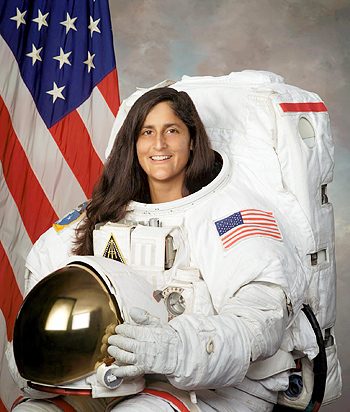
Selected as a NASA astronaut in 1998, Williams trained at Johnson Space Center and worked with the Russian space agency on the ISS programme. She launched on her first mission aboard Discovery on December 9, 2006, joining Expeditions 14 and 15 for a 195-day stint. Her second mission began July 17, 2012, via a Russian Soyuz, returning on November 19. In 2007, she became the first person to run a marathon in space, completing the Boston Marathon on a treadmill. She later became the second woman to command the ISS, led station operations, performed a space triathlon, and captured a now-famous image appearing to "touch" the Sun. A US Navy aviator since 1989, Williams served in Helicopter Combat Support Squadron 8, with deployments during Desert Shield and Operation Provide Comfort. Her calm leadership under pressure made her a standout astronaut. Honored with the Padma Bhushan, in 2008, she visited India multiple times and carried cultural symbols to space, including samosas, a Ganesha idol, and a Slovenian flag, reflecting her multicultural roots.





